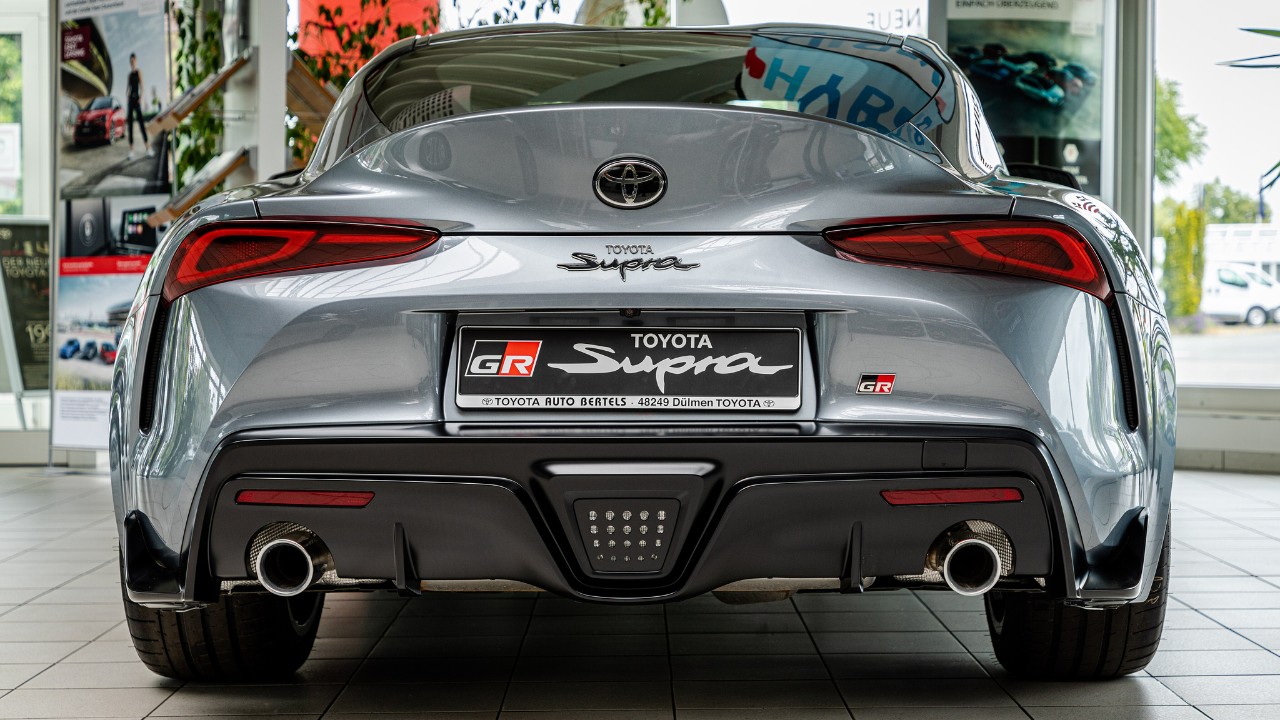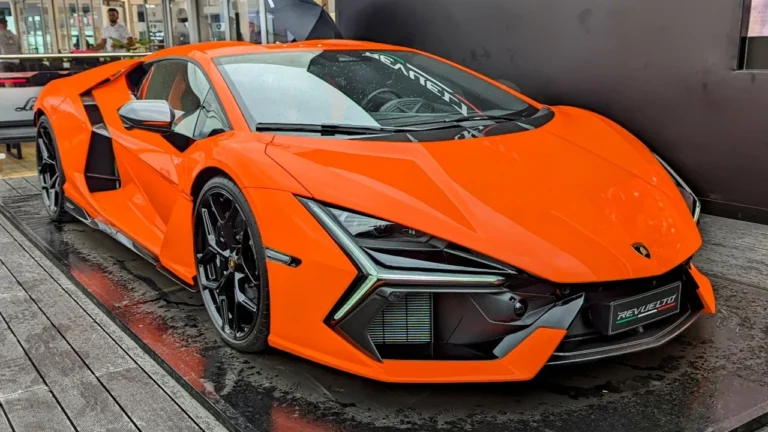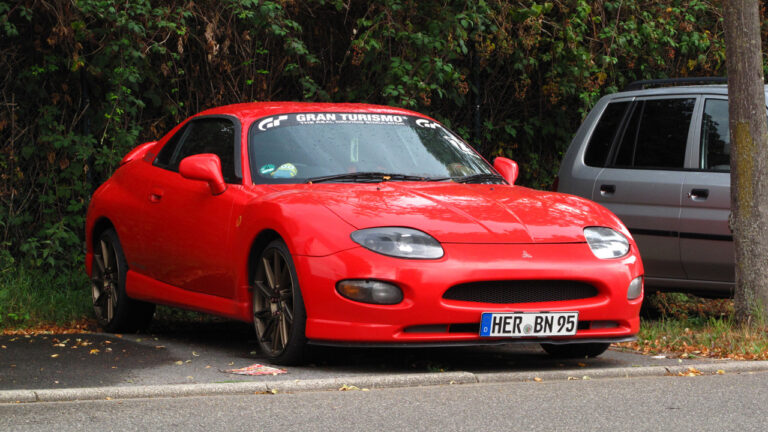13 Gas Cars That Are a Total Waste of Money

Before we begin, let’s agree to disagree on one thing: What works for me may not work for you, and vice versa. However, some things don’t work for the majority, for example, a car with a wide reputation for frustrating its owners. The cars we drive have an average of 30,000 parts and, if an ICE (internal combustion engine) car, over 2,000 of that number are moving parts in the engine.
So, there are literally tens of thousands of chances of something going wrong – many things can make a car frustrate its owners. We get the distaste for EVs (electric vehicles), and as honest people, a reality check never hurts. ICE cars were never perfect, or we wouldn’t have encountered electric in our search for something better.
For some reason or the other, from high maintenance costs to poor fuel efficiency to rapid depreciation, we beat our chest that these 13 gas-powered cars aren’t worth the money. You don’t agree? Spill it in the comment section.
Infiniti Q50

The Q50 is nice enough to get our money. The problem is we’re pretty sure it doesn’t deserve the amount it’s asking. You see, living in a bubble is not being in touch with reality. Someone should tell Nissan that the Q50 is overpriced. We doff our hats for that potent V6 under the hood, and the handling is nimble.
But the Q50 isn’t perfect. The road noise, ride quality, and infotainment system could be better. We don’t hold those shortcomings against it. No car is perfect.
We’re not impressed because we know others (Audi A4, Genesis G70, and Acura TLX, for example) like it that cost significantly cheaper and even offer better ride comfort and technology. The TLX comes standard with full-wheel drive, an Integrated Dynamic System (IDS), and a 10-speed automatic.
Fiat 500L

You won’t have much trouble (or any trouble at all) convincing the average American to stay away from a mini, and it won’t make much difference if the designation is supermini. They’re all the same to the average American. We don’t like them and don’t know why Fiat insists on selling the 500 here. The market isn’t good and hasn’t been good for the 500 in a long time stateside.
In 2023, Fiat sold 16 in America. That’s how bad it is: Sixteen Fiat 500 units. Fiat has discontinued the gas and replaced it with the electric 500e. If the gas didn’t attract buyers, maybe the electric will? Anyway, we don’t think it’s a waste of money just because people aren’t buying it.
Our problem with it is that it has next to zero attractive highlights. It’s not handsome. It has zero practicality — no trunk space to write home about, and the interior is crampy. Other than saving money on gas, there’s nothing else to show for the thousands of dollars you paid to get it.
Kia Stinger

Looking back to 2018, when the US News & World Report named the Stinger among its selection of the Best Four-Door Sports Cars, the categorization seems calculated. Of course, it is. They didn’t want to call it the best sports sedan because that would mean the Stinger possesses or at least mirrors the nimbleness of dedicated sports cars.
Perhaps they chose to call it a “4-door sports car” because they noticed what we’ve all noticed: Despite its impressive performance for a 4-door, the ride quality isn’t nearly as pleasing as – say, a Miata. But that’s not the sole reason the Stinger is here. We actually think it’s a wonderful car. We’d definitely buy it, but not at the price Kia is selling them.
I mean, we expect better steering and handling responses to the money Stinger is asking for. The GT’s twin-turbo 3.3-liter V6 is praiseworthy, but you’ll have to pay disproportionately more for that upgrade, and an estimated 20 mpg in combined city/highway fuel economy isn’t noteworthy.
Mercedes-Benz AMG GT 63 4MATIC Plus

If the people who buy the Mercedes-Benz AMG GT 63 4matic Plus are telling the truth, the attraction to this car is mostly the looks and brand prestige. We don’t deny it; the GT 63 is a fine-looking car, but we’ve seen better. That’s the truth.
We have clearer eyes and minds to make smarter decisions since we’ve seen better-looking cars, even among the GT bloodline.
In our books, handing over around $154,000 (starting price) in exchange for the worst fuel economy in its class is not smart. Both the 4MATIC Plus and S models are in the same boat on this matter. With a combined fuel economy of 17 mpg, they’re almost as bad as the Urus Performante.
Alfa Romeo Giulia

Alfa thought it could give the likes of BMW and Mercedes a good run for their money by resurrecting the classic Giulia to compete in the sports sedan market. It was good thinking, but they had a bad plan.
In short, the Giulia can’t match the 3 Series and C-Class in terms of performance, interior refinement, practicality, and technology, and no one really wants to deal with the reliability headaches associated with Alfa. Good luck finding an Alfa dealership for servicing or repairs.
They generally depreciate much faster than competitors. Suffice it to say that the Giulia gamble seems to reinforce the notion that the Germans build better sports sedans. Fashion-wise, though, Giulia is a stunner. That should count for something, right?
Cadillac CT5-V Blackwing

Yes, it’s a waste of money. You know what the “V” says about the Cadillac CT5: That it is a “more performance” variant that transforms the globally renowned luxury sedan into a super sedan that can square off with the likes of the BMW M3 and Mercedes-AMG C63.
That perfectly explains why blokes who can’t buy a Lambo without having to sleep in it think the CT5-V, with its supercharged 6.2-liter V8, is the low-dangling fruit. Is it?
The Performante is bad because it returned a combined fuel economy of 17 mpg. Well, the Blackwing returns an estimated 15 mpg combined city/highway economy. That’s pretty much the worst in the midsize class. After five years, you’d have spent $13,000 more than what your friends spent on gas.
Mitsubishi Mirage

If there ever was a car that just isn’t cheap enough, it’s the Mitsubishi Mirage. The low price is basically the only thing it has going for it. It still boasts a number in the ever-dwindling list of new cars under $20,000, taking the second slot after the Nissan Versa.
With the Mirage’s discontinuation after the 2024 model year, that list will get shorter by one car next year. Yep, Mitsubishi released details about its 2025 lineup, and the Mirage is missing from the list, including the hatchback and G4 sedan. At least, the Mirage is nothing like the infamous Yugo GV, once the cheapest car in America but ended up being the butt of jokes.
Mitsubishi’s car is far more reliable and fuel-efficient than the Yugo, but it lacks so many things. If fuel efficiency is everything to you, then we apologize for bringing the Mirage here. For the rest of us, though, it’s impossible to be happy with this car in the long term. That 3-cylinder under the hood is probably the weakest in America right now.
Chevrolet Camaro

We love the Camaro and will probably buy it “for the occasion.” You know, sometimes the occasion calls for wasting money on something you don’t really need. We don’t mean it as a slight on this American icon, but some icons belong in museums. You don’t have to buy them.
First of all, the Camaro isn’t an icon of reliability, but as we said, we’d buy it “for the occasion” — the occasion of owning and driving an American icon. However, sentiments aside, you’re better off with another American icon — the Corvette.
If the price is an obstacle, the Mustang, then. Both alternatives are more reliable 2-door American sports cars. You can’t even get decent performance with the Camaro unless you upgrade to the thirstier 6.2-liter supercharged V8.
Maserati Ghibli

The Maserati brand prestige, Italian heritage, and stunning looks are Ghibli’s primary selling points. Take those three things away, and the Ghibli has just about nothing more to justify its six-figure price tag, which explains the general hate for the car. Of course, people who buy Maseratis buy them for those reasons, plus their razor-sharp feedback to driver inputs.
The thing is, none of that still justifies the Ghibli’s $85k-plus sticker price. Take it from a Redditor who owns the car: “…High maintenance costs, reliability, and ridiculous depreciation would make people stay away from Maserati… If I was looking for reliability or resale value, I would not have gotten in any Maser.” So, why did he buy it, then? “The engine sound and how the car reacts..” But is that enough when the interior fit and finish fall short of the Audi A7 or BMW 550i?
Nissan Maxima

Do you plan to keep it forever, or will you sell it sometime in the future? Don’t buy the Maxima, then. In our books, forgoing half your car’s value not long after purchasing it is a waste of money. CarEdge states that the Maxima will depreciate 48% after just five years, and that’s assuming the car is in good condition and averaging 12k miles a year.
If you bought a Maxima in 2025, for example, it would have around 29% residual value by 2034. Even if you’re a loyal fan intending to keep the car for a lifetime, the Maxima won’t keep you for a lifetime. It’s notorious for mechanical issues likely to dog you until you decide to sell.
As CoPilot notes, the 2004 to 2008 models are prone to “significant issues such as transmission slips and jerks, camshaft and crankshaft position sensor failures, and power steering pump problems. These issues often occur after around 100k miles, resulting in expensive repair costs.”
Chrysler 200

The Chrysler 200 is another car most guaranteed to frustrate you with incessant troubles and mounting repair bills. We can get by with a car plagued by mechanical problems, but the electrical system is solid. But when a car is prone to electrical, mechanical, and drivetrain issues, we consider that car a waste of money.
Don’t just take our word for it. Nearly everyone over at Bob is the Oil Guy thinks it’s best to avoid the 200. One user wrote, “Most people label me as a MOPAR guy, and I will tell you also to pass.
The first generation Chrysler 200 had a lot of teething problems (was designed during the Cerberus ownership days). It had so many issues that Sergio Marchroni had a special team formed just to fix all of the issues before they would start on the second-gen design (2015-2017).”
Bugatti Chiron Pur Sport

Here’s what Bugatti has to say about it: “Discover the agile Chiron Pur Sport, with exceptional acceleration, precise steering, and stunning design.” Great. Well, some occasions call for showering each other with a bottle or two of the Chateau d’Yquem or Domaine Leroy Musigny Cru. Many will consider such expensive showers a waste of money, but — well, the occasion called for it.
You understand we’re trying to justify the Chiron Pur Sport’s approximately $3.6 million price tag just before bringing up the cost of feeding it with fuel. This car gets — wait for it — 9 mpg in combined city/highway fuel economy. Nine.
According to the U.S. Department of Energy, you’ll be spending $7,800 annually on gas and $28,750 more than the average for supercars over five years. What is it again that Bugatti said your $3.6 million is paying for? “… Exceptional acceleration, precise steering, and stunning design.” Buy it, then.
Toyota Supra

Alright, let’s end this article with a bang. The Supra is a waste of money. It’s a good thing you aren’t here because there’s a good chance I’ll get a hard punch to the face just for mentioning the Supra here. But, come on. Why do we always have to let Toyota get away with it? It’s a Z4, a BMW Z4, not actually a Toyota. And so what, you say.
Sure, what does it matter as long as it’s fun to drive and handles the way it does? The problem is that the BMW Z4, which is what the Supra is at its core, is far from being a poster child of reliability. We’d very much prefer if Toyota designed the car instead of repackaging the Z4 and calling it “Supra.” Did Toyota stop there? No.
It made the car exclusively automatic. Not even a manual for an option. Let’s retrace our steps. Supra isn’t literally a rebadged Z4, but both cars share a platform, engine, and transmission. The Supra is a sweet ride because Toyota tuned the suspension and calibrated the steering. We still think there’s too much shared DNA there.





